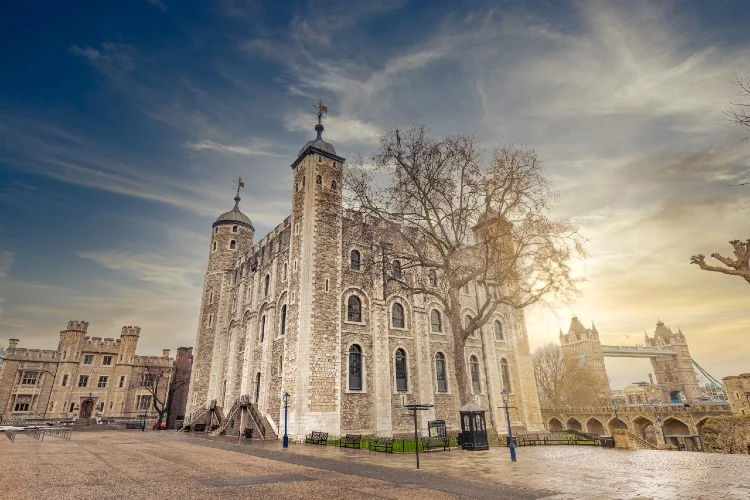Every city holds its unique feel and vibe that can be determined by numerous things. But the historical sites are one of the most contributing factors that surround a city and enrich it with culture. London is an important city in Roman Britain covered by Roman theatre, parts of the Roman walls, the oldest democracy, museums, parks, streets, canals, rivers, houses, and the spoils of a great empire.
With the wealth of endless historic sites, London provides an insight into the lives that Londoners lived thousands of years back. The construction style and infrastructure designs of these sites speak their unique yet precious historic stories. Here we have picked the ten most famous historical attractions you shouldn’t miss when you are in London.
1: British Museum
Let’s begin with the British Museum, which stands on the list of the world’s foremost museums of anthropology and history. The museum contains a huge and most revered worldwide collection ranging from Samurai armor and Babylonian stonework to pottery and glass.
The British Museum segregates its collection by cultures and themes; everything is displayed in an appropriately numbered room – one of the most controversial yet popular exhibits of this museum is Parthenon Marbles from Ancient Greece – you can find it in Room 18.
2: Big Ben London
Big Ben is London’s most famous landmark that rises above Parliament house – the tower is 320 feet high and contains the largest bell that weighs more than 13 tonnes. Besides the bell, it comprises four bigger clock faces; every clock is 23 feet across. The whole complex is enriched with history, from Guy Fawkes gunpowder to the oldest democracy site.
3: Highgate Cemetery
Highgate Cemetery is London’s graveyard where the world-famous philosopher and economist Karl Marx is buried. This burial site has also provided the space for various other prominent people, including novelists, artists, professionals, and political activists.
On the first Saturday of each month, guided tours of the East Cemetery take place for an hour and begin almost at 2:15 pm. East Cemetery is a site where Marx is interred.
4: Westminster Abbey
Westminster Abbey is an iconic structure of many historic royal buildings – coronations and weddings, burials, and even deaths. Westminster Abbey is located in the center of London; first, it was constructed by King Edward the Confessor in the eleventh century.
Poets’ corner and Coronation Chair are the main attractions of the Abbey; wandering around these sites is overwhelming.
5: Imperial War Museum
The Imperial War Museum is basically child-friendly and exhibits the WWI trench’s reconstruction – you can explore worldwide conflicts throughout the museum. The military history, aspects of WWI, WWII, Holocaust, women’s roles in the conflicts, wartime artwork, and the political issues of the time are also represented there.
6: London Roman Wall
The London Roman Wall was built between 190 and 220 AD and stretched about three miles from Blackfriars to Tower Hill. Over the centuries, the London Roman Wall has been shrouded by different developments; still, there are many well-preserved parts that can still be observed today.
7: Cabinet War Rooms
The Cabinet War Rooms are a bunker complex where Winston Churchill and his government performed World War Two’s activities. The Cabinet War Rooms were restored and opened to the public in the 1980s. Visitors are allowed to spend at least 90 minutes savoring the iconic atmosphere of the Second World War site.
8: Kew Palace
Kew Palace was built by merchant Samuel Fortrey around 1631 but opened for the public in 1898. This 17th-century palace is the oldest surviving building and is noted for its distinctive gables and decorative brickwork.
The ground and first floor rooms have been re-established to reflect the Georgian era, but the second floor remained.
9: Kensington Palace
Kensington Palace is the most visited historic royal residence in London. Since the 17th century, the palace has been the home of the British Royal Family – you will spot different artifacts and paintings from the Kensington Palace’s Royal Collection.
10: Jewel Tower
Jewel Tower is an architectural masterpiece of the 14th century. It was constructed in 1365-66 and known as the Jewel House or King’s Privy Wardrobe. This place holds delicate historical artifacts like English Romanesque sculptures, Iron Age Swords, etc.
So, if you are going to London, don’t miss to visit these ten historic places and share the experience with your friends and family. Your sim-only deals will provide you with sufficient data to call and text your family and friends without any hassle. Instead of other bundled devices of the same price – the sim-only deal offers more data and inclusive minutes.
Final Words
When you visit London, you will find various worthwhile spots that have been adding the lifeblood to this city for centuries. Every wall and building tells the story of people who lived there through the ages and deeply influenced London’s civilization; eventually, they made the city the great melting and eye-catching spot that it has always been and is still today.
There are hundreds of such historical places in London, and it is hard to narrow them down, but in this blog, you can take a tour of some of the best. These sites will offer you a little snapshot of a fantastic world metropolis.















